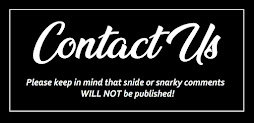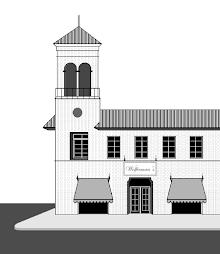Dixie Highway (Western Avenue) and West 151st Street
City of Harvey, Illinois
What more can be added to the legacy of Southside Chicago's DIXIE SQUARE that has not already been said? While I cannot contribute anything relevant to this story, I still feel that DIXIE SQUARE deserves mention on -and induction into- The Mall Hall Of Fame. So, here goes...
This 1960s shopping mall experienced the most rapid rise and fall of any mid-20th counterpart. It stayed in business for only 12 years and has become the most legendary "Lost Mall" of all. Even Denver's CINDERELLA CITY, which has become almost as notorious for its shooting star trajectory of success, decline and demolition, cannot top the incredibly ironic (even sublimely ridiculous) story of DIXIE SQUARE.
While CINDERELLA CITY was long gone and could only be recalled in fond memories, DIXIE SQUARE stood for several years as a crumbling testament to bad planning, urban decline and government mismanagement.
The DIXIE SQUARE story begins in 1964, when plans for a fully-enclosed shopping facility of fifty stores and services was announced. The complex was to be constructed on a 58-acre site, located 22 miles south of The Loop, in suburban Harvey.
Encompassing a single retail level and 780,000 leasable square feet, the mall was developed by the Meyer C. Weiner Company and designed by Grand Rapids, Michigan's Hornbach & Steenwyck firm. Construction commenced in April 1965.
The mall held a sneak preview, featuring singer Mel Torme, in August 1966. Its 2-level (182,000 square foot) Montgomery Ward was dedicated October 27, 1966. The official grand opening of the retail hub took place between November 10th and 12th of the same year. A 2-level (144,000 square foot) J.C. Penney served as the center's second anchor. Inline stores included Walgreen Drug, a Jewel supermarket and F.W. Woolworth 5 & 10.
The early years of DIXIE SQUARE were successful. The mall drew a considerable amount of trade from another south side center, PARK FOREST PLAZA (1949) {8.9 miles south, in Park Forest}. However, RIVER OAKS CENTER (1966) {5.7 miles southeast, in Calumet City} put the hurt on DIXIE SQUARE.
An expansion was completed in 1970. It added a 1-level (108,400 square foot) Turn*Style Family Center to the northeast end. However, this discount department store stayed in business for only 7 years. It closed in early 1978, with its store space never being retenanted.
In retrospect, the decline and fall of the shopping center has been attributed to the wave of crime that engulfed the area. Patrons were robbed and shot. Stores recorded staggering amounts of shrinkage. By the late 1970s, the decline of the complex, now known as DIXIE MALL, was going full-throttle. Montgomery Ward pulled out in December 1977, Penney's in January 1978. By that November, mall concourses were closed, with exterior-entranced Walgreen's and Jewel stores remaining in business until early 1979.
The abandoned shopping center was signed over to the local school district, who rented its space to director John Landis. He used the mall for location shooting of his "Blues Brothers" motion picture, which was released in June of 1980.
DIXIE SQUARE was utilized as a temporary school for 2 years. After this, the mall was left to decay. Its roof was eventually compromised, allowing rain and snow to enter. Within a few years, the once pristine, 8 million dollar shopping center resembled a nuclear test site.
Several botched attempts to redevelop the complex came and went, with lots of graft and mismanagement in tow. During the final failed attempt, asbestos was discovered at the site, which resulted in an immediate cessation of demolition work.
Alas, the rapidly-decomposing shopping mall was left to rot, be set on fire and serve as the host for rapes and murders. Parts of the parking area were utilized for a new police department, temporary jail and senior citizen housing complex.
In February 2010, another prospective demolition was announced, spearheaded by Chicago-based MG Development South, Limited Liability Company. This project was eventually bogged down by government red tape.
Demolition of DIXIE SQUARE finally commenced January 25, 2012. The first stage of the project, consisting of asbestos abatement, was completed in 2 weeks. Stage two, which entailed razing all remaining structures, was done between February and May 2012.
Sources:
The Chicago Tribune
http://pleasantfamilyshopping.blogspot.com
http://www.labelscar.com
Pawfilmworks.com
The Chicago Tribune
http://pleasantfamilyshopping.blogspot.com
http://www.labelscar.com
Pawfilmworks.com
http://chicago.cbslocal.com
Harvey Historic Documents / http://www.barraclou.com
Harvey Historic Documents / http://www.barraclou.com
"Dixie Square" article on Wikipedia


